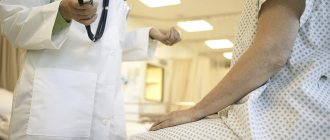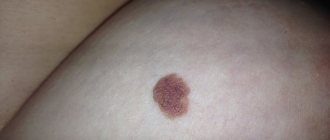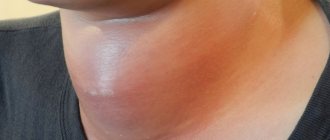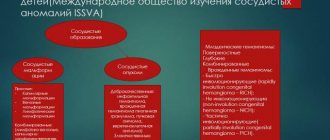Large cyst under the armpit Cysts in the armpit area are a problem that affects both men and women. They are often painless, but can also hurt if infected.
A cyst is a non-cancerous “closed pocket of tissue that may be filled with fluid, pus, or other contents” [webmd.com] with an outer wall known as a capsule. They feel like peas (or pimples) under the surface of the skin (and on internal organs such as the kidney, liver, etc.) and can appear anywhere. Can occur in men and women of all ages.
The most common cysts in the armpit are acne, sebaceous cysts, and epidermal inclusion cysts (EIC). Pilonidal cysts can also sometimes appear, although they are usually "found on the skin near the buttocks."
Symptoms
Cysts in the armpits can be small (microscopic) or large and noticeable. These cysts can be found around or near the armpits and can be caused by a number of reasons.
Associated symptoms are related to the cause of the problem. The most obvious one is abnormal skin texture in the form of bumps. Most cysts are painless (unless infected or inflamed), grow slowly, and are "smooth to the touch, rolling under the skin" [webmd.com].
Preventive measures
The risk of atheroma can be minimized by adjusting the rules of hygiene procedures, skin care and partly lifestyle. You should:
- Strictly observe personal hygiene, take a shower regularly, wipe the skin in the armpit area thoroughly and dry.
- If you are prone to excessive sweating due to one or another chronic thyroid disease or hyperhidrosis, use a high-quality antiperspirant.
- Balance your diet, do not exceed the daily intake of fats and carbohydrates (especially simple ones).
- Those with oily skin should choose professional daily care products that suit their skin type.
In addition to general methods of prevention, it is important to undergo routine examinations with a dermatologist, which, when pathology begins, will allow it to be identified at an early stage, to avoid complications and long-term treatment.
Causes
Shaving and using deodorants
A cyst in the armpit can be caused by shaving. They often occur in teenagers who have just started removing armpit hair. Additionally, using antiperspirant or deodorant can also trigger the formation of a bump. It is recommended to use the razor correctly and carefully.
Bacterial infection
Humidity can stimulate the growth of bacteria that cause cysts, especially streptococcal and staphylococcal bacteria. In this case, there may be enlargement of the lymph nodes, which usually resemble balls or bumps under the armpit. Antibiotics and other antibacterial treatment options are recommended.
Viral and fungal infection
Some fungal and viral infections can cause cysts to form in and around the armpits. For example, sporotrichosis, shingles, chicken pox and some problems that can arise as a result of HIV infection due to weakened immunity.
Cancer
Lumps in the armpit area may be a sign of lymphoma, which occurs as a result of a buildup of damaged lymphocytes in a lymph node. The tumor may be painful and as the disease progresses, symptoms such as fatigue, fever, night sweats, sudden weight loss, itching, loss of appetite, etc. may also be affected. The lymph nodes of the neck and groin may also be affected. It is known that Hodgkin's lymphoma and non-Hodgkin's lymphoma can cause this problem.
Fibrocystic changes in the breast
Women who suffer from breast tenderness and lumps just before their menstrual cycle may end up experiencing a lump. This occurs when some breast tissue spreads into the armpit area.
Vaccinations
Allergic reactions to vaccines for diseases such as mumps, smallpox, typhoid, rubella, measles, etc. can cause cysts and inflammation of the lymph nodes in the armpits. This is a temporary phenomenon that goes away on its own.
Suppurative (suppurative) hidradenitis
Hidradenitis suppurativa
Sometimes a small cyst may appear on the arm, armpit or groin due to the large number of sebaceous and sweat glands. It is associated with hidradenitis suppurativa, where “clusters of abscesses or subcutaneous boils affect areas that contain apocrine and sebaceous glands, such as the armpits, under the breasts, on the inner thigh, in the groin and near the buttocks” [en.wikipedia.org].
Lipoma
Lipoma (non-cancerous fatty tissue)
Another possible cause, especially for small bumps, is a lipoma. “A lipoma is a slow-growing lump that is most often found between the skin and the muscle layer” [mayoclinic.org]. This is a soft to the touch, mobile, non-cancerous growth that can grow and be painful from time to time. Sometimes removal may be necessary.
Keratin accumulation
When keratin accumulates, epidermoid cysts can form. Epidermoid cysts are “non-cancerous small lumps under the skin. They can appear anywhere on the skin, but are most common on the face, neck and torso" [mayoclinic.org]. These cysts grow slowly, do not require treatment and are painless. You should consult a doctor if pain or inflammation is present.
Epidermoid cysts are more common in men and range in size from a few millimeters to about 5 centimeters.
Other reasons
Other possible causes include cat scratch fever, mononucleosis, breast tissue infection, breast cancer, certain medications, autoimmune disorders such as systemic lupus erythematosus, juvenile rheumatoid arthritis, rheumatoid arthritis, excessive sweating, etc.
Survey
If you complain about enlarged axillary lymph nodes, you should consult a hematologist who will prescribe a comprehensive examination. The diagnostic search is aimed at identifying the root cause of lymphadenopathy and assessing the morphological structure of the affected lymphoid formation. The most informative research methods are:
- Ultrasonography
. Ultrasound of the lymph nodes is performed to study the morphological features of the lymphoid formation, clarify its size and connection with other anatomical structures. The method is not specific enough and is often prescribed for screening studies. - Needle biopsy
. Sampling of cells from an enlarged axillary node followed by cytological analysis is recommended if hemoblastosis is suspected. A node biopsy allows one to differentiate inflammatory diseases from malignant tumors of the blood system. - Clinical blood test
. A general blood test is necessary to determine the presence and degree of activity of the inflammatory process. A sharp increase in the number of certain types of cells or the appearance of undifferentiated precursor cells has diagnostic value. - X-ray examination
. All women with complaints of axillary lymphadenopathy are recommended to undergo mammography to exclude oncopathology. In young women, ultrasound of the mammary glands is more informative, which is due to the increased density of breast tissue.
Additional studies and consultations with other specialists may be required to confirm a preliminary diagnosis. For possible tuberculosis, chest X-ray in two projections, sputum culture, and tuberculin tests are recommended. In doubtful cases, a bone marrow biopsy is performed to exclude hemoblastosis. Serological tests are prescribed to detect antibodies to infectious agents or tissues of one’s own body (in autoimmune processes).
Ultrasound of lymph nodes in the axillary region
Pilonidal cyst
It is “a cyst or abscess in or near the crease of the buttocks, which often contains hair and dead skin particles” [en.wikipedia.org]. In rare cases, it can also occur on the genitals, armpits and navel. Accompanied by the following symptoms: discomfort or swelling in the armpit, bloody or opaque yellow discharge and sudden release of fluid.
Treatments include hot compresses, antibiotic therapy, and depilatory creams. In some cases, surgical removal may be prescribed.
Atheroma
Atheroma – sebaceous gland cyst
Atheroma is “a cyst that arises from the sebaceous glands and contains sebum” [Wikipedia.org]. They are less common compared to epidermoid cysts.
Sebaceous cysts in the armpit often appear when these glands are blocked, high testosterone levels are present, androgenic anabolic steroid use, hereditary factors, or inflamed hair follicles. This problem affects people of any gender and age.
Symptoms
Some common symptoms include skin soreness and tenderness, redness, a “grayish-white, foul-smelling, curd-like content that is released” [nlm.nih.gov] and fever in the affected area.
Treatment
As a rule, it does not require medical treatment, especially if it is small in size. For relief, you can use a damp, warm compress. However, if the atheroma causes discomfort or is large in size, you can resort to surgical removal. This is a simple process that removes the bag and all its contents. Antibiotics may be recommended if the cyst is infected with bacteria.
Possible complications and consequences
An epidermal cyst, like armpit warts, always retains the possibility of developing an inflammatory process. If this has already happened, it may be difficult to remove it from the armpit. Manipulations will have to be postponed until the inflammation stops and the consequences are eliminated.
Large atheroma is at risk of rupture and transfer of its contents into soft tissue, including the surrounding breast tissue. All this can lead to an abscess or phlegmon. When an infection occurs, the location of the atheroma turns red, severe pain appears, and the body temperature may rise.
Treatment methods
In most cases, armpit cysts disappear on their own. However, some may require treatment, which depends on the cause of the problem. To understand that it is a cyst, “you need to try to move it back and forth with your thumb and forefinger. If the lump is mobile, it is probably a cyst" [Health.howstuffworks.com]. A biopsy may be needed if it is suspected of being cancerous. However, axillary cysts are rarely cancerous.
Extrusion and drainage
Some may require opening and drainage for symptoms to resolve. This may require a scalpel or needle and the procedure should be carried out by a specialist. This method does not cure, but relieves symptoms, especially if purulent contents are present. And it increases the likelihood of the bumps reappearing.
Medicines and injections
Cortisone injections may be used to shrink cysts. This is a steroid injection that reduces swelling. Infections may require medications such as antibiotics or antifungals.
Surgical removal
If all of the above treatments fail to resolve the problem, surgical removal should be considered. Recommended for large sizes and severe anxiety symptoms. Laser surgery may also be used.
Home Remedies
Some of the popular home remedies that you can try include hot compresses, washing with antibacterial soap. If the cyst bursts, it is necessary to clean it and then apply an antibacterial ointment to reduce the infection.
However, you should not squeeze or open it, as this leads to scarring, infection, and may increase the chances of recurrence. However, if the bud is ripe, you can squeeze it out and clean it.








